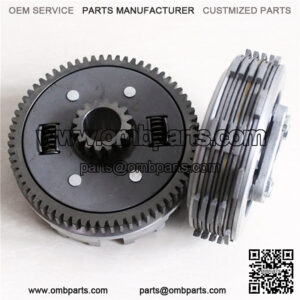Modern motorcycle engines are of unit construction: powerplant, clutch, and gearbox are in one unit, with crankshaft and clutch geared together. It wasn’t always so—British motorcycle engines and gearboxes were long separate, joined by bolting to engine plates. The clutch (mounted on the gearbox) was driven by a primary chain from a sprocket on the engine’s crankshaft. A chaincase enclosed and protected the chain.
“Motorcycle clutches have worked this way for a century, with variations.”
The spinning engine is turning the clutch outer drum and the five or more friction discs it drives. The inner clutch drum and the steel plates to which it is splined remain stationary because the act of putting the transmission into gear connects gearbox input and output shafts to each other. Because the bike is at rest, the rear wheel and everything connected to it—drive chain, plus both gearbox shafts—remain stationary.
Motorcycle clutches have worked this way for a century, with variations.
The heart of a slipper clutch. Balls-and-ramps reduce clutch grip in proportion to engine-braking torque. Reverse torque from engine braking drives the balls up their ramps to reduce clutch spring pressure. In a slipper/assist clutch, forward torque adds to spring pressure, increasing clutch grip and allowing a lighter initial clutch pull.Jeff Allen
This allows clutch slippage to take the place of tire slippage or hop, making the bike more stable.

